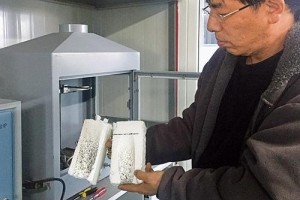本标准适用于控烟系统的设计、安装、验收试验、操作和不间断周期试验。
This standard shall apply to the design, installation, acceptance testing, operation, and ongoing periodic testing of smoke control systems.
2. 目的Purpose
本标准建立了实现以下一个或多个目标的控烟系统的要求:
The purpose of this standard shall be to establish requirements for smoke controlsystems to accomplish one or more of the following:
(1)阻止烟气进入楼梯井、疏散设施、避烟场所、电梯井等类似区域;
Inhibitsmoke from entering stairwells, means of egress, smoke refuge areas, elevatorshafts, or similar areas
(2)在要求疏散时间内,维持避烟场所和疏散设施的环境可耐受。
Maintaina tenable environment in smoke refuge areas and means of egress during the time required for evacuation
(3)防止有烟区域中烟气向外部扩散;
Inhibitthe migration of smoke from the smoke zone
(4)在有烟区外建立可使应急人员进行搜救操作并定位及控制火灾的条件;
Provideconditions outside the smoke zone that enable emergency response personnel to conduct search and rescue operations and to locate and control the fire
(5)保护生命安全,减少财产损失。
Contribute to the protection of life and to the reduction of property loss
控烟系统应提供的条件由其它规范和标准规定。
The requirements specifying the conditions under which a smoke control system shall be provided are addressed by other codes and standards.
具体设计目标由其它规范和标准规定。
Specificdesign objectives are established in other codes and standards.
3. 目录Contents
第1章 管理Administration
1.1 范围Scope
1.2 目标Purpose
1.3 追溯效力Retroactivity
1.4 等效性Equivalency
1.5 单位和公式(预留)Units and Formulas.(Reserved)
第2章 引用出版物Referenced Publications
2.1 总则General
2.2 NFPA出版物NFPA Publications
2.3 其它出版物Other Publications
2.4 强制部分中的摘录参考References for Extracts inMandatory Sections
第3章 定义Definitions
3.1总则General
3.2 NFPA正式定义NFPA Official Definitions
3.3 通用定义General Definitions
第4章 设计基础Design Fundamentals
4.1 设计目标Design Objectives
4.2 设计基础Design Basis
4.3 设计方法Design Approaches
4.4 设计标准Design Criteria
4.5 系统操作System Operation
4.6 楼梯间加压系统Stairwell PressurizationSystems
4.7 电梯间加压系统Elevator PressurizationSystems
4.8 分区控烟Zoned Smoke Control
4.9 系统结合Combination of Systems
4.10 前厅Vestibules
4.11 门Doors
第5章 烟管理计算步骤Smoke ManagementCalculationProcedures
5.1 引言Introduction
5.2 设计火Design Fire
5.3 质量消耗Mass Consumption
5.4 烟层计算Smoke Layer Calculations
5.5 烟质量产生率Rate of Smoke Mass Production
5.6 排废口数量Number of Exhaust Inlet
5.7 溶剂流率Volumetric Flow Rate
5.8 烟浓度Density of Smoke
5.9 各种界面几何形状和复杂几何形状Varying Cross-Sectional Geometries and
Complex Geometries
5.10 逆风Opposed Airflow
5.11 标度律Scaling Laws
第6章 建筑设备和控制Building Equipment andControls
6.1 总则General
6.2 取暖、通风和空调(HVAC)设备Heating, Ventilating and Air-Conditioning(HVAC)Equipment
6.3 防烟阀Smoke Dampers
6.4 烟控制系统Smoke Control Systems
6.5 能量管理Energy Management
6.6 材料Materials
6.7 电气设备Electric ServicesInstallation
第7章 控烟系统文件编制Smoke Control System Documentation
7.1 要求的文件编制Documentation Required
7.2 细节设计报告Detailed Design Report
7.3 操作和维护手册Operations andMaintenanceManual
第8章 试验Testing
8.1 总则General
8.2 初步建筑检查Preliminary BuildingInspections
8.3 部件系统试验Component System Testing
8.4 验收试验Acceptance Testing
8.5 试验文件Testing Documentation
8.6 周期性试验Periodic Testing
8.7 修改Modifications
附录A 解释性材料Explanatory Material
附录B火的热释放速率的预测Predicting the Rate of HeatRelease of Fires
附录C 中庭和购物中心的计算机模型Computer-BasedModels for Atria and Malls
附录D 附加设计目标Additional Design Objectives
附录E 烟的分层Stratification of Smoke
附录F 楼梯间加压系统的类别Types of StairwellPressurizationSystems
附录G HVAC空气处理系统类型HVAC Air-Handling SystemTypes
附录H 消防员烟控制站(FSCS)考虑事项Fire Fighters’ Smoke-Control Station (FSCS)Considerations
附录I 防烟分区间泄漏试验的信息Information on Testing forLeakage Between Smoke Zones
附录J 验收试验建议信息Advisory Information onAcceptance Testing
附录K公式使用问题示例图解Example Problems Illustratingthe Use of Equations
附录L公式对比Comparison of Equations
附录M 信息性参考Informational References









